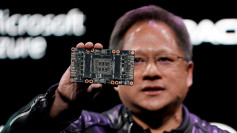DDR5 memory appears to be the most recent hardware component to be hit by a component shortage, as it is virtually out of stock at all major shops.
The scarcity of DDR5 memory modules isn't due to a shortage of DDR5 chips, according to research from electronic component seller 12chip. This is partly due to the fact that DDR5 chips are made on an older 14nm process node, and DRAM suppliers haven't experienced any problems meeting demand.
The issue is that, unlike DDR4, DDR5 modules include a power management integrated circuit (PMIC), which was previously a component of the motherboard. The PMIC required for DDR5 is not only significantly more expensive than that required for DDR4, but it is also in short supply, with a 35-week procurement time estimate.
According to several tech board channels, the PMIC chip is in short supply, and not only that, but the price to purchase it is 10 times higher than what memory makers had to pay for the same chip with DDR4.
The main difference is that with the DDR5 standard, power management moves away from motherboards and onto the memory modules themselves. As a result, a new and specialized power management chip is required, which allows the RAM to obtain power directly from the PSU rather than the motherboard handling power delivery.
As if that wasn't terrible enough, in the second quarter of this year, RAM prices are expected to jump by 13% to 18%. Due to a PMIC chip scarcity, new DIMMs are still expensive and difficult to procure in the fourth quarter of 2021.
Fortunately, there is a fix for this problem because some Z690 motherboards, such as the Gigabyte Z690 Aorus Elite, enable DDR4. However, as DDR5 sticks become more widely accessible, this option will leave you without DDR5 support.
If you decide to buy a new set of DDR4 sticks, keep in mind that Crucial, one of the most popular memory manufacturers, claims that DDR5 will be able to reach speeds of 8,400MHz over time.
Some analysts expected that DDR5 will exceed DDR4 in terms of market share by 2023 earlier this year, but given the present supply chain challenges, that appears highly doubtful.
On a brighter note, the chip shortage has provided an unexpected boost to smaller chipmakers, allowing them to more easily invest in expanding their production capacity. They should be able to improve the availability of PMICs and other important components in the next few years, at least in theory.





